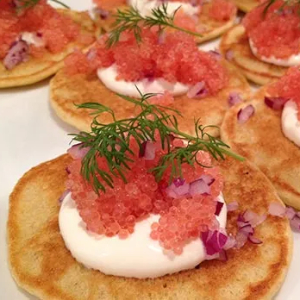We’ve just been to Iceland on our continuing gastronomic tour of the world. It’s actually part of Denmark and the national menu reflects that. Neighbouring Greenland is also part of Denmark, but its traditional cookbook is reflective of its indigenous people – the Inuit…
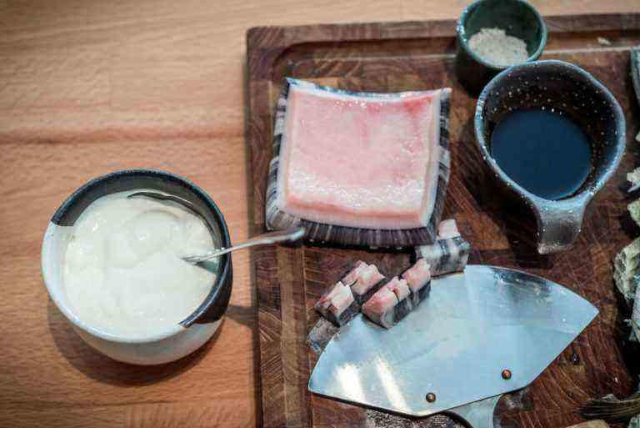 Raw Narwhal Blubber: A Greenlandic delicacy…
Raw Narwhal Blubber: A Greenlandic delicacy…
Most of Greenland is far from green – though global warming has been melting its ancient interior glaciers at an alarming rate over the past few years. Nevertheless, the arable band along the island’s southern coast is home to a unique and classically Arctic culture. The population is predominantly Inuit – the same people who call Canada’s Eastern Arctic region home. And, like their cousins to the west, they rely heavily on the sea for their sustenance.
When you think Arctic foods, you naturally think Seals and Whales. But there’s much more to it than that. Greenland is one of the world’s leading exporters of Halibut – an upgrade from Cod on most international Fish and Chips menus. Land animals such as Sheep, Muskox and Reindeer make important contributions to the Greenlandic larder. And Dairy foods help balance the meat- and fat-heavy Greenlandic diet.
One peculiarity of Greenland’s cuisine is that many of its dishes are traditionally eaten raw. That’s the Inuit culture coming through. As a rule, sea-sourced foods are often consumed au tartare, and land-sourced foods are cooked.
On our menu today:
Arfeq Nikkui: Whale Meat. Thia Greenlandic staple is eaten in pretty much every way you can think of: raw, smoked, cured or dried. As in Iceland, drying is a popular method of preserving foods, and Greenlanders love their Jerky!
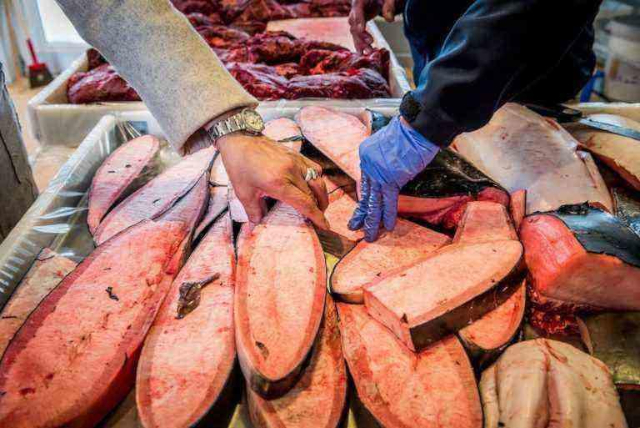
So important are Whales to the Greenlandic diet, that the government enforces strict controls on the fishery to ensure it remains sustainable.
Qilalukkat Orsua: Narwhal Blubber. This delicacy is served raw, in the form of a square of Narwhal skin backed by the animal’s outer layer of tough cartilage which, in turn, supports a relatively thin layer of pinkish fat. You eat the fat and toss the rest away. Unless you are one of those Greenlandic traditionalists who swallow the bite-sized nuggets (Mattaq) whole – skin, cartilage and all.
Puisi: Seal. In Greenland, as traditional Arctic culture demand, they use all possible parts of the animals they catch. So it is with Seals, whose skins are tanned and died to make various traditional garments.
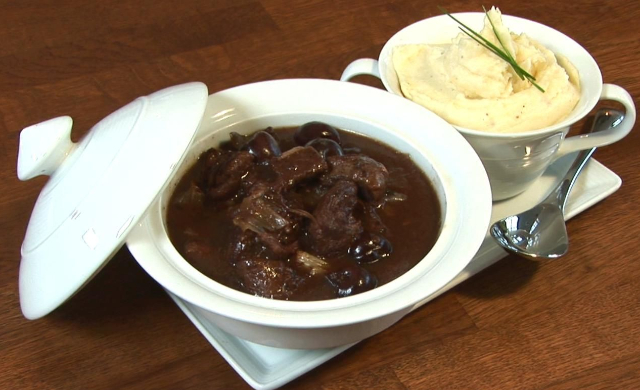
As anyone who has ever tried Seal will tell you, it’s a pungent, gamey meat. It’s often found in Greenland in the national soup, Suassat. The Seal meat is usually simmered low and slow with onions and a simple starch – potatoes, rice or barley.
Saarullik Panertoq: Cod. A species that became endangered due to over-fishing during the third quarter of the last century, Atlantic Black Cod is once again plentiful in Arctic waters surrounding Greenland.
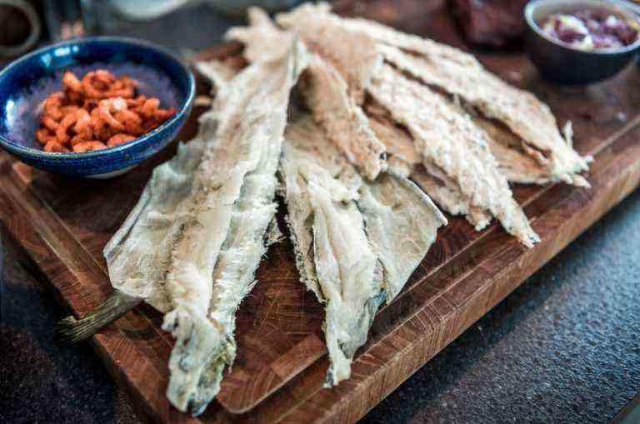
It’s a day-to-day staple. Filleted fresh or dried for use year round in soups, stews and other dishes, Cod is also a favourite snack and lunch, in Jerky form.
Kapisilik: Greenlandic Salmon. Like French Wines and Italian Olive Oil, Greenland’s unique Salmon is a closely guarded national treasure. No exports allowed. So, if you’re ever in Greenland, be sure to try it when you have the chance! You’ll see it on menus at ‘better’ restaurants in baked and fried presentations.
Umimmak: Muskox. ‘Umimmak’ translates literally to ‘the long-bearded one’. The meat is used in simple soups and stews, as well as in steaks, roasts and other cuts more familiar to those of us who live farther south and are used to consuming cows instead.
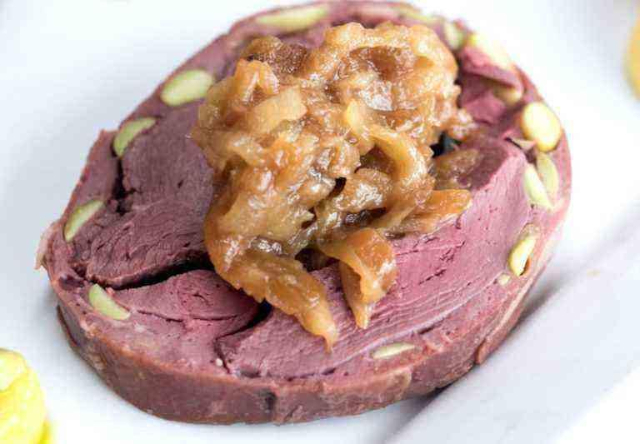
The rich, red meat is also served au tartare in classy restaurants. As with seals, Muskox fur is used to make traditional garments, and is sought after by boutique couturiers who create high-fashion coats, blankets, boots and other artisanal items from it.
Reindeer: While Muskoxen are found in the lowlands of Greenland, Reindeer inhabit the highlands. In the same way that many folks go deer hunting in the fall, Greenlanders go reindeer hunting, to fill their freezers for the winter. Reindeer is enjoyed in all the cuts and cooking styles in which southerners prepare beef: roasts, steaks, ground meat, ribs and so on. A daily staple in Greenlandic homes, Reindeer is also featured as a luxe ‘filet mignon’ on high-class restaurant menus.
Sava: Greenland Lamb. Prized by epicureans the world over, Greenlandic Lamb is raised exclusively free-range.
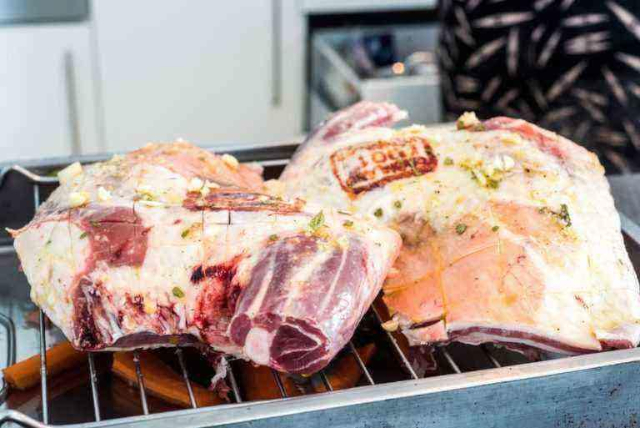
The island nation has virtually no polluting industry, and the clean air, soil and water result in what is considered a ‘pure’ product. Lamb is served in all the cuts folks from the south will recognise, almost always roasted or stewed.
Nipisaq: Lumpfish Roe. A favourite treat, Nipisaq is often served with red onions and capers. The eggs are larger than most other fish eggs and feature what those in the know call a ‘delicious crunch’. Nipisaq is usually served as a appetizer in restaurants – like conventional caviar.
Greenlandic cooking styles
What foods commonly accompany the foregoing meats? We’ve already hinted that potatoes are a ubiquitous root veggie in Greenland. Onions – as in most of the cuisines of the world – are also staples, and the southern Greenlandic climate is amenable to growing other root veggies, notably carrots. A few herbs are used, sparsely. And salt and pepper are the universal ‘spices’.
We’ve already covered most of the main food preparation styles of Greenland: roasting, stewing, soups, drying and en tartare. Missing from that list are the popular, default cooking method, boiling, and frying, which is often used for fish. But how do these techniques translate to recipes?
Boiled Fish (often Cod) is a family favourite. Often served with a Mustard Sauce comprised of Prepared Mustard, Fish Stock, Milk, Butter, Chopped Hard Boiled Eggs and Horseradish.
Kartoffelsalet Varm: Hot Potato Salad. It’s similar in some respects to German Hot Potato Salad but simpler, made with Chicken Stock, vegetable oil, onions, vinegar, water and sugar. The potatoes are par-boiled then cut into bite-sized pieces. The onions are sautéed in the oil, and all the ingredients are put together and simmered until the potatoes are cooked through.
Reindeer Stew: A common every-day Reindeer dish. Every Greenlandic cook has their own specific recipe. Potatoes and onions are always used, and sometimes carrots.
Suassat: We mentioned Greenland’s national soup previously… While it is usually made with Seal, it can also me made from Whale, Reindeer or Seabirds (21 species can legally be hunted). Again, every Greenlandic cook has their own specific recipe.
Want a belly-busting breakfast? Try the traditional Greenlandic day-starter, as described by Greenland aficionado Margaret Sharrow: “If you’ve visited Denmark, Greenlandic breakfasts will come as little surprise. They’re heavy on the salami and other cold sliced meats, served smorrebrod style on heavy rye bread, or on special breakfast rolls. The bread may also be spread with a variety of soft cheesy spreads flavoured with mushrooms, etc., or covered with cheese. […] Dairy features heavily in the Greenlandic breakfast, despite all having to be imported from Denmark.”
Going to Greenland? Prepare your palate!
The mains, snacks, breakfasts and lunches of Greenland are uniformly robust and pungent. They’re heavy on fat – as arctic circle diets usually are, to provide folks with the wherewithal to survive in that climate. On the other hand, they’re light on sugar. But salt and pepper are universally used – the only common ‘spices’ on the menu. I guess you have to be used to the Greenland diet to get along with it.
Tomorrow, we’ll explore Greenlandic breads, deserts and beverages…
~ Maggie J.

